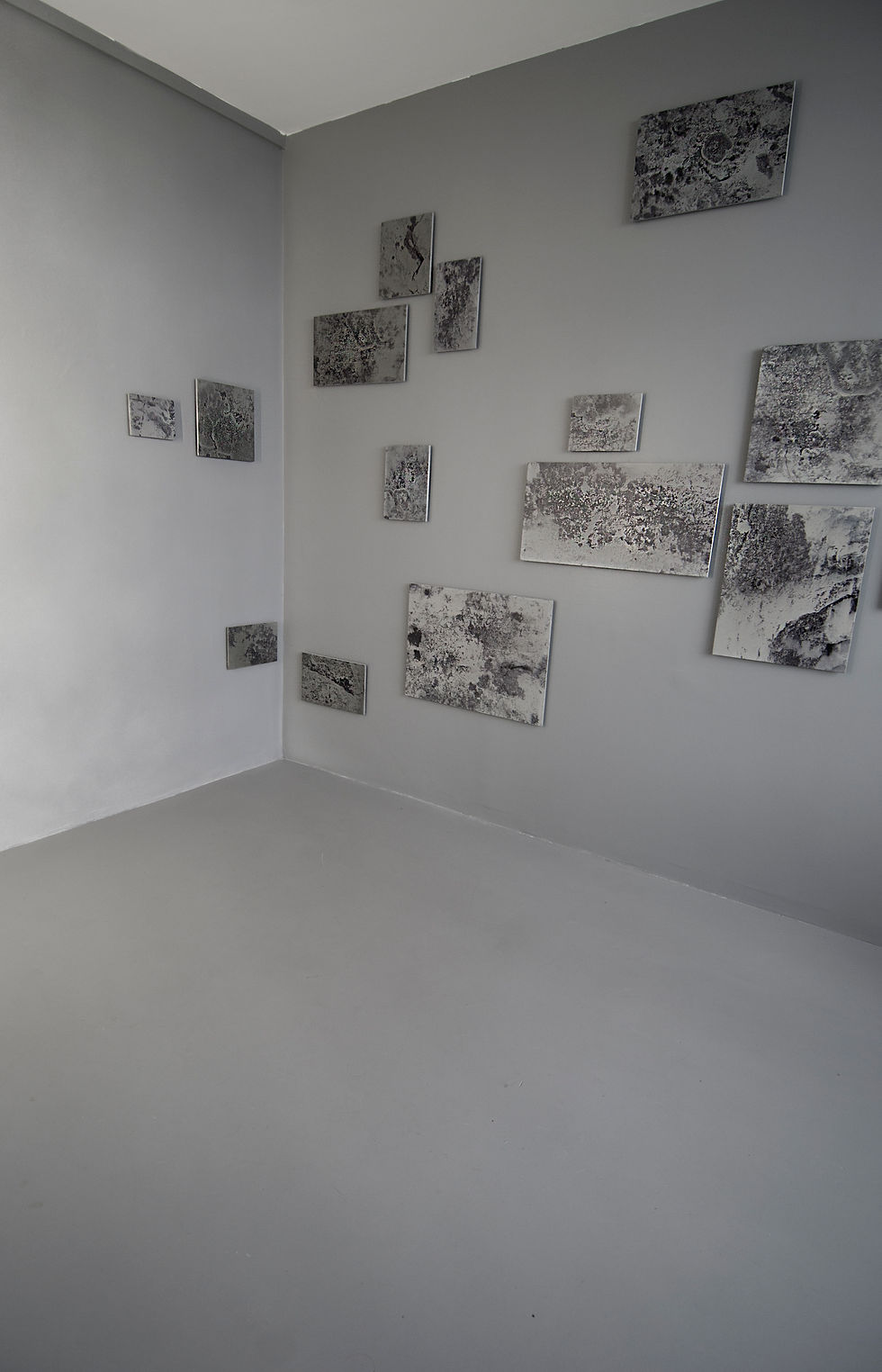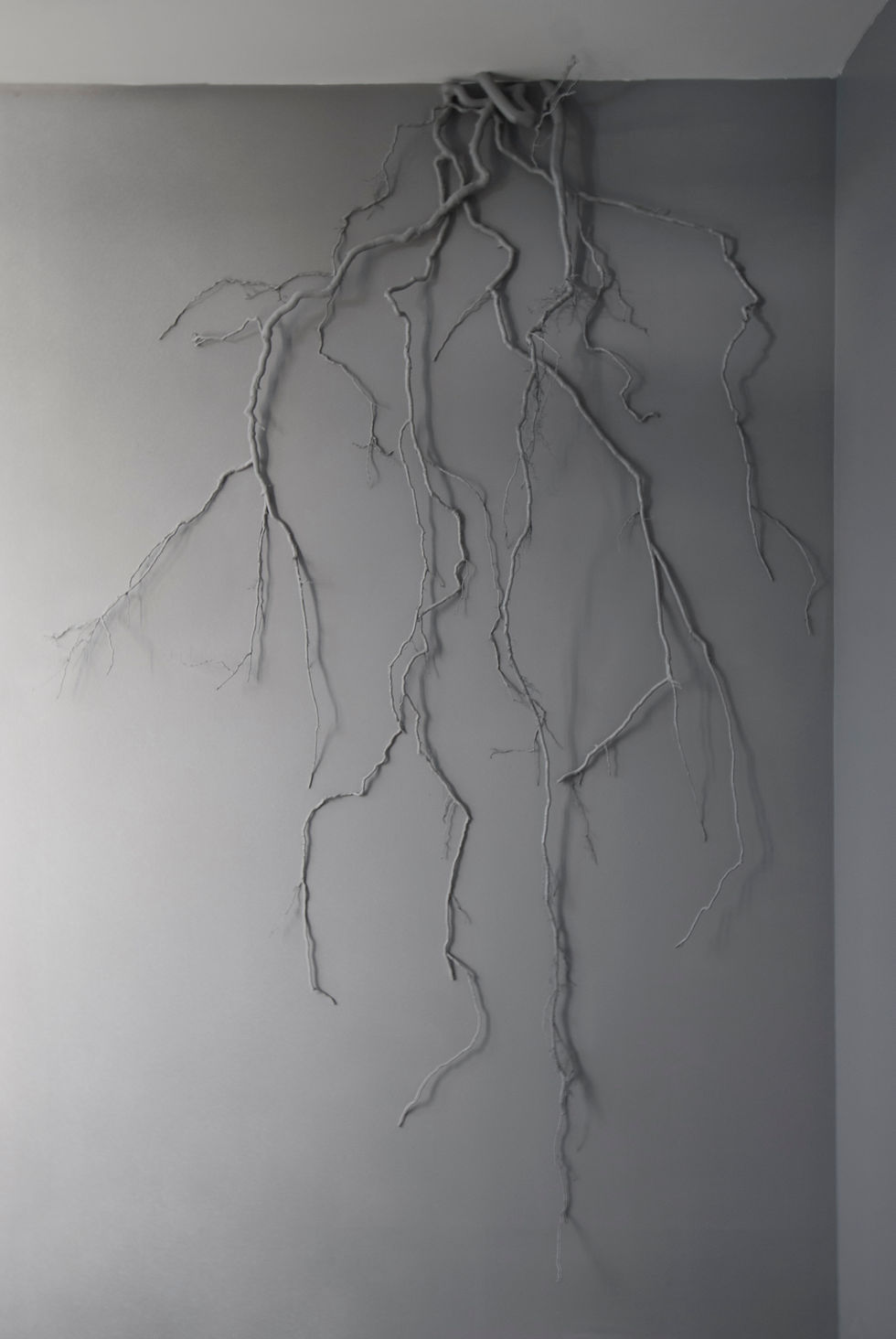Following government announcements, 22.48 m2 is due to temporarily close its doors to the public until December 2, but is looking forward to seeing you online on Facebook / Twitter / Instagram. To be informed of exclusive content, subscribe to our newsletter. ❤️

Exhibition view

Thalle, 2014, print on concrete, variable dimensions

Thalle, 2014, print on concrete, variable dimensions

Thalle, 2014, print on concrete, variable dimensions

Erosion, 2014, ceramic, sound system, wood structure, 35,4 x 17,7 x 17,7 inches

Erosion, 2014, ceramic, sound system, wood structure, 35,4 x 17,7 x 17,7 inches

Exhibition view

Frangula, 2014, root, 67 x 90,5 inches

Frangula, 2014, root, 67 x 90,5 inches

Frangula, 2014, root, 67 x 90,5 inches
#30
Cécile Beau
SUBSTRAT
Solo show
Text by Nathalie Desmet
11/09/2014 -01/11/2014
Cécile Beau is interested in phenomena too slow or too discrete for the human time scale; those we cannot see or are barely perceptible. She takes it to overturn our ordinary perceptions. With "Substrat", she proposes a semi-subterranean fiction far from our usual references. The gallery becomes a sedimentary surface just waiting to modify. Daylight is there rarefied. Repetition of complex physical or organic phenomena, poetic reproductions of laboratory experiments or spatiotemporal fictions?
Frangula (2014), is a root surreptitiously insinuating itself into the gallery space through the ceiling, quietly. Deprived of its stem, without any floor anchoring, barely bearing against the wall surface, it seeks a nourishing matter. Its network of lines that seem to adapt their shapes to the space, might as well be a lightning or the image of an hydrographic network, whose branched forms, are recurring in nature. Frangula may also worry when we consider the capacity of roots to raise the floor.
Érosion (2014) is an irregular hole, a kind of dark gut formed in the wall. The installation gives to hear the whirling movements of a dust particle pushed by the wind. By modeling the path of a particle, Cécile Beau represents with sounds, the air distribution following invisible obstacles and makes of mechanical erosion, which is a difficult process to represent, a product of the imagination. The fiction is then placed in a world of another time or another dimension.
The Thalle series (2014) shows familiar figures and yet indefinable: landscapes views from the sky, cell clusters? Thalle (thallus) refers to the vegetative system of lichens. These are the perfect expression of the mutual benefit that nature can create between mineral structure and organic structure. Feeding on dust carried by the winds they end up becoming substrates for other plants.
Surface and depth are reversed, human time scale and geologic time scale overlap. Thus, the mineral matters that usually serve as supports for lichen become here photosensitive concrete plates which themselves are based on the gray color of the place; a hole in a wall becomes the narrow entrance of an invisible cave crossed and turned by wind or water; the surface of the mural paint becomes a sediment where a tree finds matter to form its roots. On a scale that is beyond us, the walls may become again substratum; the graduated light can be enough to give energy to the sensitive walls of the gallery so that life can develop there.
Cécile Beau mixes temporalities which are hard to be represented for our human perception to concrete representations of phenomena in the process of slow or extremely slow transformation. Similarly, she reversed the measures and the scales. Thus, on the human scale, concrete - supporting the lichens - is a construction material, but geologically, it is an aggregation of silica, sand, and water ... a mineral. The time Cécile Beau is dealing with comes under the Greek term Aion. She translates it with analogies and permanent connections between the infinitely large and the infinitely small, the macrocosm and the microcosm. The temporality of the rock formation is overtaken by time of the exhibition. The thousands of years needed for elements to carve the stone are somehow moved to another scale, to the congruence of space-times impossible to reconcile.
Cécile Beau reveals the intuitive knowledge of the levels of organization of the universe, of their interweaving, so the short temporality of human action is always in her work a resurgence of the long temporality of the cosmos. For her, in her quest of space-times contraction, the mineral matter ends up by turning organic.
[Nathalie Desmet]
PRESS RELEASE
